How Sincere Apology Emails Can Transform Customer Loyalty
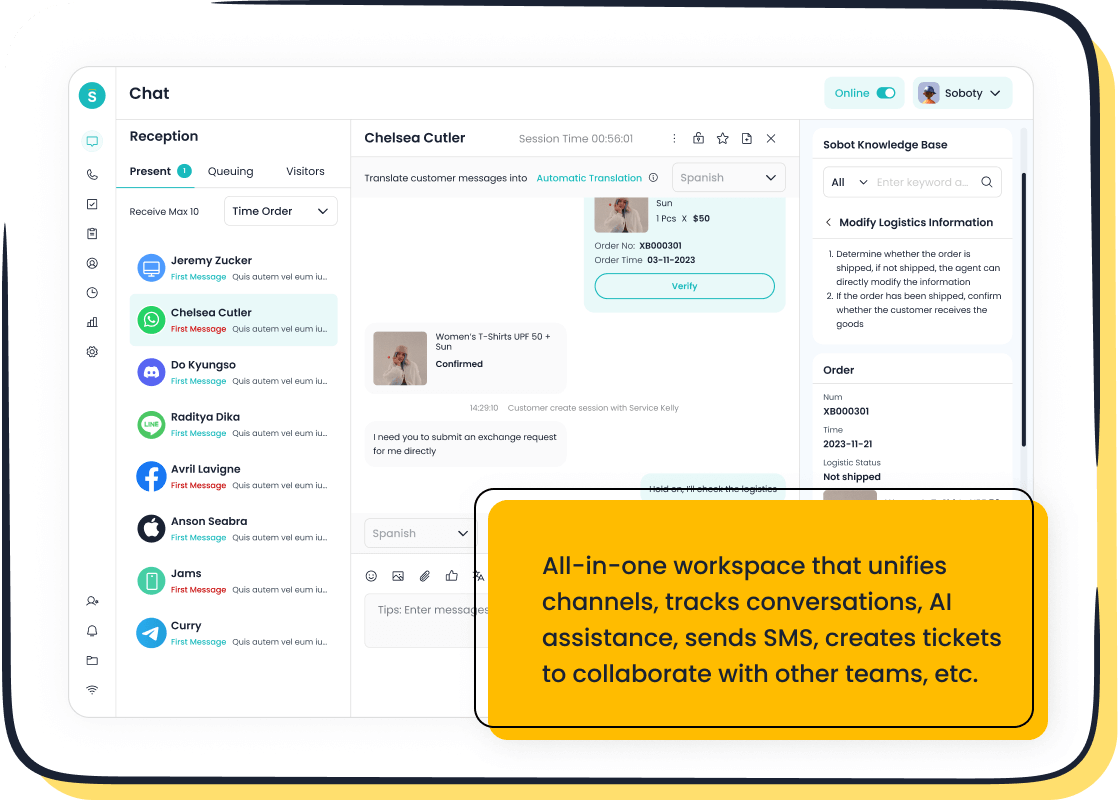
Mistakes are an inevitable part of business, but how you respond to them can shape your relationship with customers. Sending a sincere apology email to a customer is a powerful way to turn a negative experience into an opportunity to build trust and loyalty. By addressing issues with empathy and accountability, businesses can reassure customers that their concerns are valued. Research shows that 70% of customers who voice complaints are likely to return if their problems are resolved effectively. Personalization in these emails further enhances loyalty, with 98% of companies reporting its positive impact. Sobot’s advanced customer engagement solutions, such as Live Chat, empower businesses to craft timely and meaningful apology emails to customers, strengthening connections and fostering trust.
The Importance of Apology Emails in Customer Service

Why Apology Emails Matter in Customer Relationships
Apology emails play a pivotal role in shaping customer relationships. When a mistake occurs, your response can either repair or damage the trust customers place in your brand. A well-crafted apology email to a customer demonstrates accountability and empathy, which are essential for building long-term loyalty.
- A timely apology shows that you value the customer's time and concerns. This simple act can turn a negative experience into a positive one.
- Taking responsibility in your communication minimizes the impact of the issue and reassures customers that their feedback matters.
- Research highlights that addressing customer complaints effectively can significantly enhance trust and loyalty.
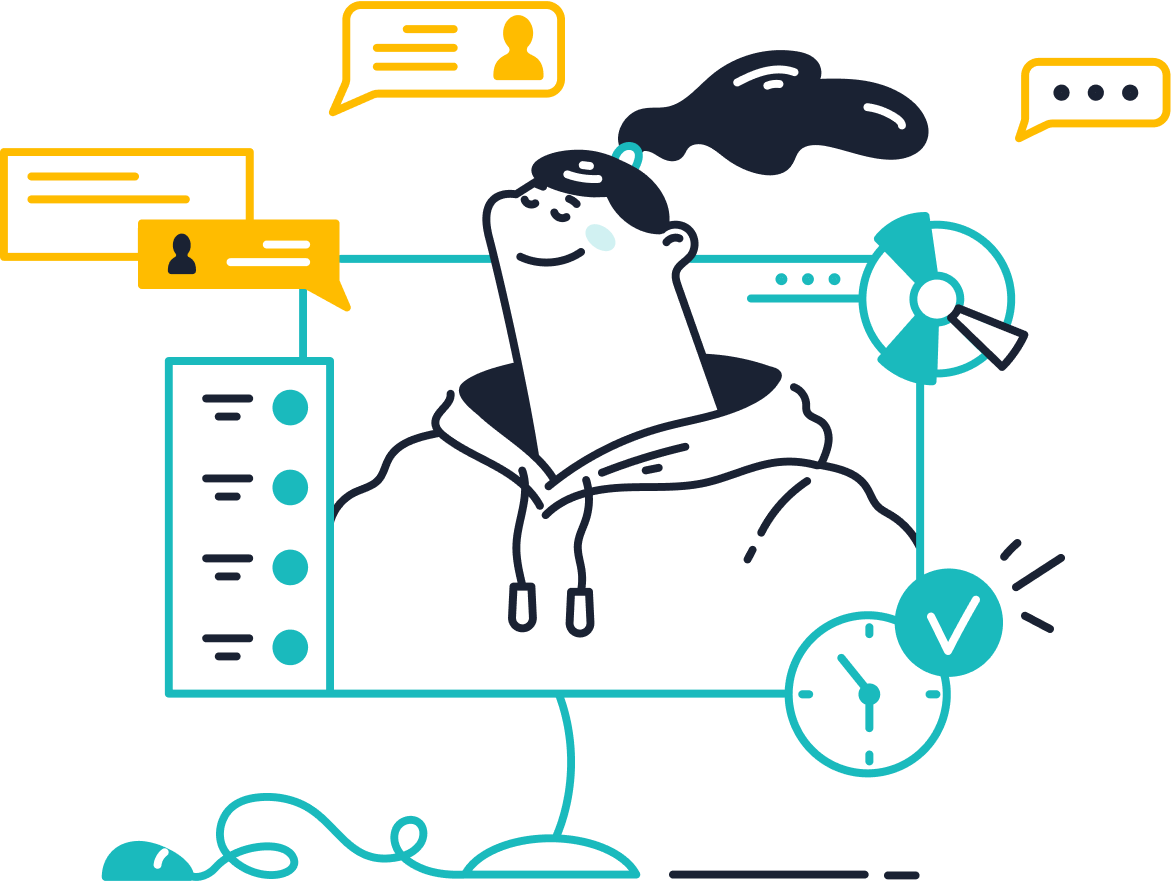
For instance, Sobot’s Live Chat solution enables businesses to respond quickly and personally to customer concerns. By integrating customer data into a unified workspace, it ensures that your apology emails are not only timely but also personalized, making customers feel truly valued.
The Role of Trust in Customer Loyalty
Trust is the foundation of customer loyalty. Without it, even the most innovative products or services may fail to retain customers. Apology emails serve as a bridge to rebuild trust when it has been compromised. They show that your business is willing to admit mistakes and take corrective action.
When you send a sincere apology, you demonstrate that your brand prioritizes customer satisfaction over short-term gains. This transparency fosters a sense of reliability. Customers are more likely to stay loyal to a brand they trust, even after an issue arises.
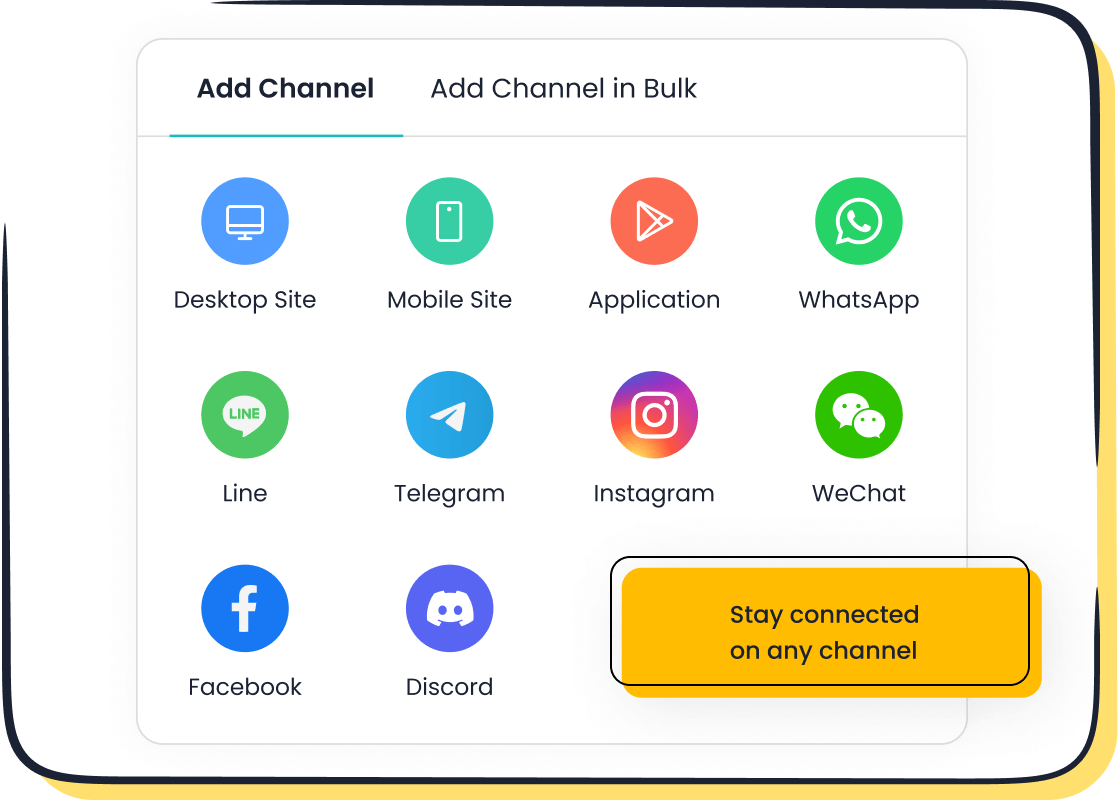
Sobot’s omnichannel solution enhances this trust-building process by ensuring consistent communication across all platforms. Whether through email, social media, or live chat, your customers receive the same level of care and attention, reinforcing their confidence in your brand.
How Apology Emails Can Prevent Customer Churn
Customer churn is a significant challenge for businesses, but it can often be mitigated with effective communication. Apology emails are a simple yet powerful tool to address customer dissatisfaction and prevent them from leaving.
- Apologizing for mistakes reduces the likelihood of losing customers.
- A structured approach, such as listening to the customer, apologizing without excuses, and offering solutions, can significantly improve retention rates.
- Successfully resolving issues through apology emails not only retains customers but also turns them into advocates for your brand.
For example, Opay, a financial service platform, leveraged Sobot’s omnichannel solution to manage customer interactions seamlessly. By addressing customer concerns promptly and effectively, Opay increased its customer satisfaction rate from 60% to 90%. This demonstrates how a proactive approach to customer service apologies can transform negative experiences into opportunities for growth.
Crafting a Sincere Apology Email to Customers
Acknowledging the Issue Clearly
The first step in crafting an effective apology email to a customer is to acknowledge the issue clearly. Customers want to feel heard and understood, so it’s essential to address the problem directly and transparently. Avoid vague language or generic statements. Instead, provide specific details about the issue and its impact on the customer.
For example, if a delivery was delayed, you might write:
"We understand that your recent order, scheduled for delivery on [date], did not arrive on time. We sincerely apologize for the inconvenience this has caused and recognize how this may have disrupted your plans."
This approach demonstrates accountability and shows the customer that you are aware of the problem. Acknowledging the issue also sets the stage for a meaningful resolution.
The following table highlights key elements of successful issue acknowledgment in apology emails:
| Key Element | Description |
|---|---|
| Acknowledgment | Clearly state the mistake or error, providing specific details. |
| Responsibility | Take ownership without making excuses or shifting blame. |
| Sincere Apology | Use straightforward language, such as "I apologize for the inconvenience." |
| Rectification Steps | Outline actions to resolve the issue and prevent future occurrences. |
| Humility | Show empathy by acknowledging the customer’s perspective. |
Sobot’s Live Chat solution can help you gather the necessary details to craft a personalized acknowledgment. By consolidating customer data into a unified workspace, it ensures that your apology email is both accurate and empathetic.
Expressing Genuine Regret
Expressing genuine regret is the cornerstone of a sincere apology. Customers can easily detect insincerity, so your words must reflect authentic empathy and understanding. A heartfelt apology reassures customers that their concerns matter and that your business values their trust.
When expressing regret, avoid overused phrases like "We regret any inconvenience caused." Instead, use language that conveys empathy and responsibility. For instance:
"We deeply regret the frustration this situation has caused you. Your experience does not reflect the high standards we strive to maintain."
This level of sincerity can transform a negative experience into an opportunity to strengthen customer loyalty. Research shows that a sincere apology can even lead to greater loyalty than if no issue had occurred. The table below illustrates how accountability and empathy in apologies can turn frustration into loyalty:
| Key Point | Explanation |
|---|---|
| Accountability | Customers value honesty and responsibility, which helps maintain trust. |
| Turning Frustration into Loyalty | A sincere apology can foster stronger loyalty than if no issue occurred. |
| Avoiding Negative Feedback | A well-crafted apology prevents customers from sharing negative experiences publicly. |
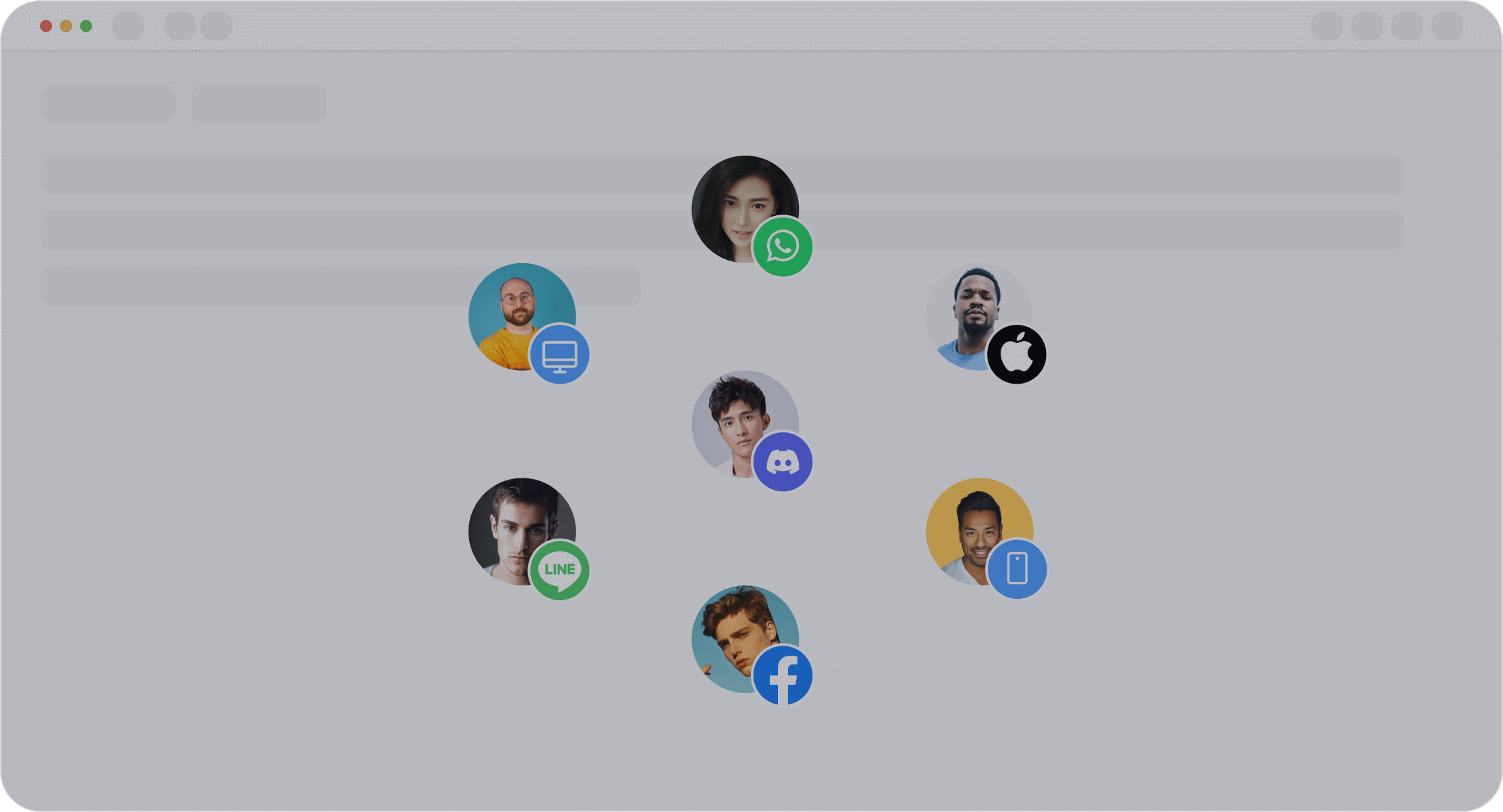
Sobot’s omnichannel solution ensures consistent communication across platforms, enabling you to express regret in a timely and professional manner. Whether through email, live chat, or social media, you can maintain a unified tone of empathy and care.
Offering a Solution or Compensation
Acknowledging the issue and expressing regret are important, but customers also expect a resolution. Offering a solution or compensation demonstrates your commitment to making things right. This step not only resolves the immediate problem but also rebuilds trust and satisfaction.
When offering a solution, be specific and actionable. For example:
"To resolve this issue, we have expedited your order and it will arrive within 24 hours. Additionally, we have issued a $10 credit to your account as a token of our apology."
Compensation, whether monetary or non-monetary, can significantly enhance customer satisfaction. Studies validate this approach:
| Study | Findings |
|---|---|
| Gelbrich & Roschk (2011) | Compensation offsets dissatisfaction and enhances satisfaction. |
| Jung & Seock (2017) | Compensation improves perceived justice and word-of-mouth intentions. |
| Grewal et al. (2008) | Positive effects of compensation on repurchase intentions. |
| Harris et al. (2006) | Compensation positively influences consumer expectations and attributions. |

Sobot’s Live Chat platform simplifies the process of offering solutions. Its AI-powered tools enable agents to identify the best course of action quickly, ensuring that customers receive timely and effective resolutions. By moving forward with a solution, you not only address the issue but also reinforce your commitment to customer satisfaction.
Reassuring Customers About Future Improvements
When customers experience an issue, they want more than just an apology—they want assurance that the same problem won’t happen again. Reassuring customers about future improvements is a critical step in restoring their confidence and loyalty. This involves demonstrating your commitment to learning from mistakes and taking proactive measures to enhance your processes.
1. Communicate Specific Actions You’re Taking
Customers appreciate transparency. Clearly outline the steps your business is taking to prevent similar issues in the future. For example, if a technical glitch caused a delay, explain how your team is upgrading systems or implementing new protocols. A statement like, “We’ve identified the root cause of the delay and are implementing a system update to ensure timely deliveries moving forward,” shows accountability and progress.
Sobot’s Live Chat platform can support this effort by providing real-time insights into customer interactions. With its built-in analytics, you can identify recurring problems and take data-driven actions to address them. This ensures that your promises of improvement are backed by measurable efforts.
2. Highlight Your Commitment to Quality
Reassure customers that quality and reliability remain your top priorities. Use your apology email as an opportunity to reaffirm your dedication to delivering exceptional service. For instance, you might say, “We are committed to maintaining the highest standards and will continue to invest in tools and training to serve you better.”
Sobot’s omnichannel solution exemplifies this commitment by streamlining communication across platforms. Its unified workspace allows your team to respond efficiently, reducing the likelihood of errors and enhancing the overall customer experience.
3. Invite Feedback for Continuous Improvement
Encourage customers to share their thoughts on how you can improve. This not only demonstrates humility but also fosters a sense of collaboration. Include a simple call-to-action in your email, such as, “We value your input. Please let us know how we can serve you better by replying to this email or completing this short survey.”
Sobot’s satisfaction survey feature makes this process seamless. By collecting and analyzing customer feedback, you can identify areas for improvement and implement changes that align with customer expectations. This proactive approach strengthens trust and loyalty.
4. Provide a Timeline for Changes
Customers feel reassured when they know improvements are already underway. Share a realistic timeline for implementing changes. For example, you could write, “We are rolling out these updates over the next two weeks and will keep you informed of our progress.” This level of transparency builds credibility and shows that you take their concerns seriously.
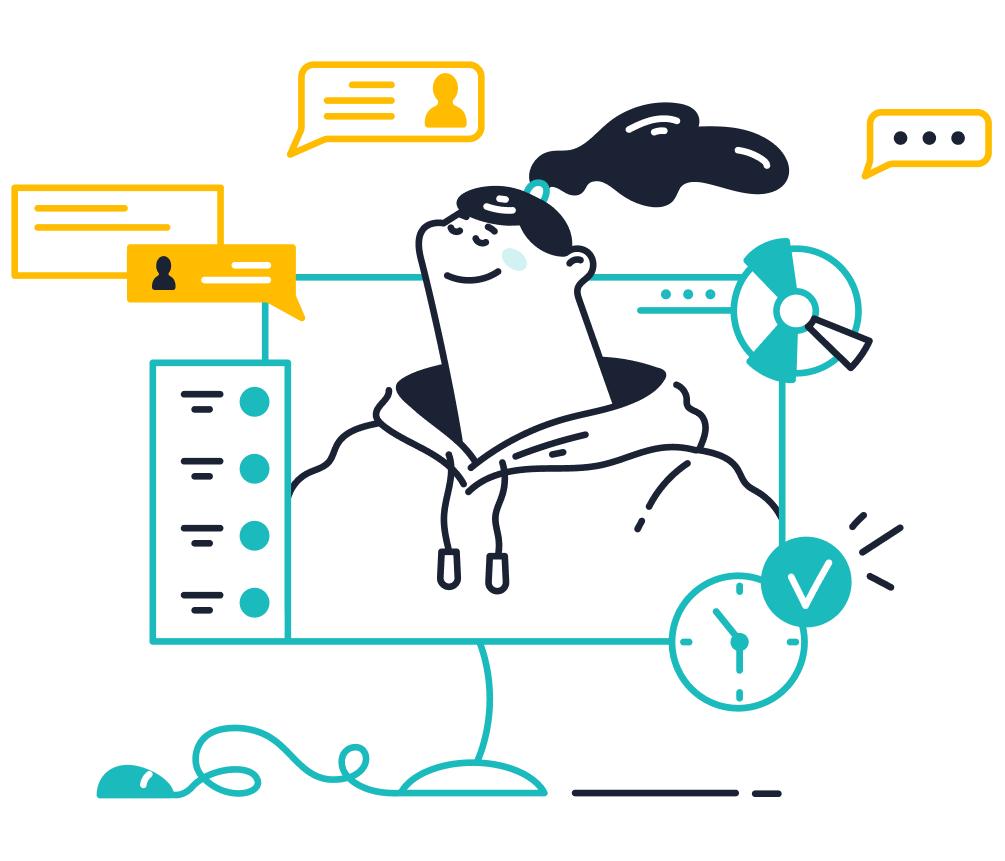
Opay, a financial service platform, successfully used Sobot’s omnichannel solution to address customer concerns and implement improvements. By streamlining communication and resolving issues promptly, Opay increased customer satisfaction from 60% to 90%. This demonstrates how a structured approach to future improvements can yield tangible results.
5. End on a Positive Note
Conclude your email with a message of optimism and gratitude. Thank the customer for their patience and understanding, and express your excitement about delivering an improved experience. A closing statement like, “We are confident that these changes will enhance your experience, and we look forward to serving you better,” leaves a lasting positive impression.
By combining transparency, action, and gratitude, you can turn a challenging situation into an opportunity to strengthen customer relationships. Sobot’s advanced tools, such as Live Chat and omnichannel solutions, empower businesses to communicate these improvements effectively, ensuring that customers feel valued and reassured.
Common Pitfalls in Writing Apology Emails
Using Generic or Insincere Language
When communicating about mistakes, using generic or insincere language can alienate your customers. Apologies that lack authenticity often fail to resonate, leaving customers feeling undervalued. For example, public figures like Clinton and Trump have faced criticism for apologies that included self-promotional or accusatory elements. These insincere approaches undermined their effectiveness and damaged trust. Customers expect genuine empathy and acknowledgment of their concerns, not empty phrases or excuses.
Instead of saying, "We regret any inconvenience caused," try a more personal approach: "We deeply regret the delay in delivering your order and understand how this may have disrupted your plans." This demonstrates that you value the customer’s experience and are committed to resolving the issue. Sobot’s Live Chat solution can help you craft personalized responses by consolidating customer data into a unified workspace, ensuring your apologies feel authentic and tailored.
Failing to Take Responsibility
Admitting to your mistakes is crucial for maintaining trust. Apologies that deflect blame or include phrases like "I’m sorry you feel that way" fail to take responsibility and often come across as dismissive. Customers want to see accountability, not excuses. Industry research highlights that effective apologies identify the victim, express remorse, and offer restitution. Avoid justifying harmful actions or diminishing customer perceptions, as these tactics can erode trust.
For example, if a technical error disrupted service, acknowledge it directly: "We take full responsibility for the outage and are working to ensure it doesn’t happen again." This approach shows customers you’re human and willing to learn from your mistakes. Sobot’s omnichannel solution supports this by enabling consistent, transparent communication across platforms, reinforcing your commitment to accountability.
Overpromising and Underdelivering
Overpromising and underdelivering can severely damage your reputation. Customers who feel misled often experience dissatisfaction and may share negative reviews, leading to decreased loyalty and sales. For instance:
- Unmet expectations can result in unhappiness and frustration.
- Negative experiences often spread quickly on social media, amplifying the damage.
- Customers may feel they’ve wasted their time or money, fostering resentment.
To avoid this pitfall, set realistic expectations and follow through on your promises. If you offer compensation, ensure it aligns with what you can deliver. For example, instead of promising a full refund within 24 hours if it’s not feasible, provide a clear timeline: "Your refund will be processed within 3-5 business days." Sobot’s Live Chat platform helps businesses manage customer expectations effectively by providing real-time updates and actionable solutions, reducing the risk of overpromising.
Ignoring the Customer’s Emotional Experience
Failing to address a customer’s emotional experience in an apology email can significantly damage your relationship with them. Customers expect more than a generic acknowledgment of the issue—they want to feel understood and valued. When you overlook their emotions, you risk leaving them frustrated and dissatisfied, which can lead to negative reviews or even customer churn.
Using vague or deflective language, such as "We regret any inconvenience," often exacerbates the problem. Customers may interpret such phrases as dismissive, feeling that their concerns are not taken seriously. Positive emotions play a critical role in restoring trust after a mistake. By actively creating a supportive and empathetic tone, you can transform a negative situation into an opportunity to strengthen loyalty.
- Customers feel dismissed when businesses fail to take accountability.
- Deflective language can intensify feelings of neglect, further damaging trust.
- Phrases like "sorry for the inconvenience" often frustrate customers, undermining the apology.
For example, instead of saying, "We apologize for the inconvenience," you could write:
"We deeply regret the frustration this issue has caused. Your experience matters to us, and we are committed to making things right."
This approach acknowledges the customer’s emotions and demonstrates genuine care. Tools like Sobot’s Live Chat can help you craft such personalized responses. By consolidating customer data into a unified workspace, it enables your team to understand the context of the issue and respond with empathy.
Additionally, businesses should invite customers to share their feedback. This not only shows humility but also fosters collaboration. Sobot’s satisfaction survey feature makes it easy to collect insights, helping you identify emotional pain points and address them effectively. By prioritizing emotional acknowledgment, you can rebuild trust and turn dissatisfied customers into loyal advocates.
Ignoring emotions in apology emails is a costly mistake. Instead, focus on creating a positive emotional atmosphere. This strategy not only enhances the effectiveness of your apologies but also strengthens your brand’s reputation for customer care.
The Transformative Impact of Apology Emails on Customer Loyalty
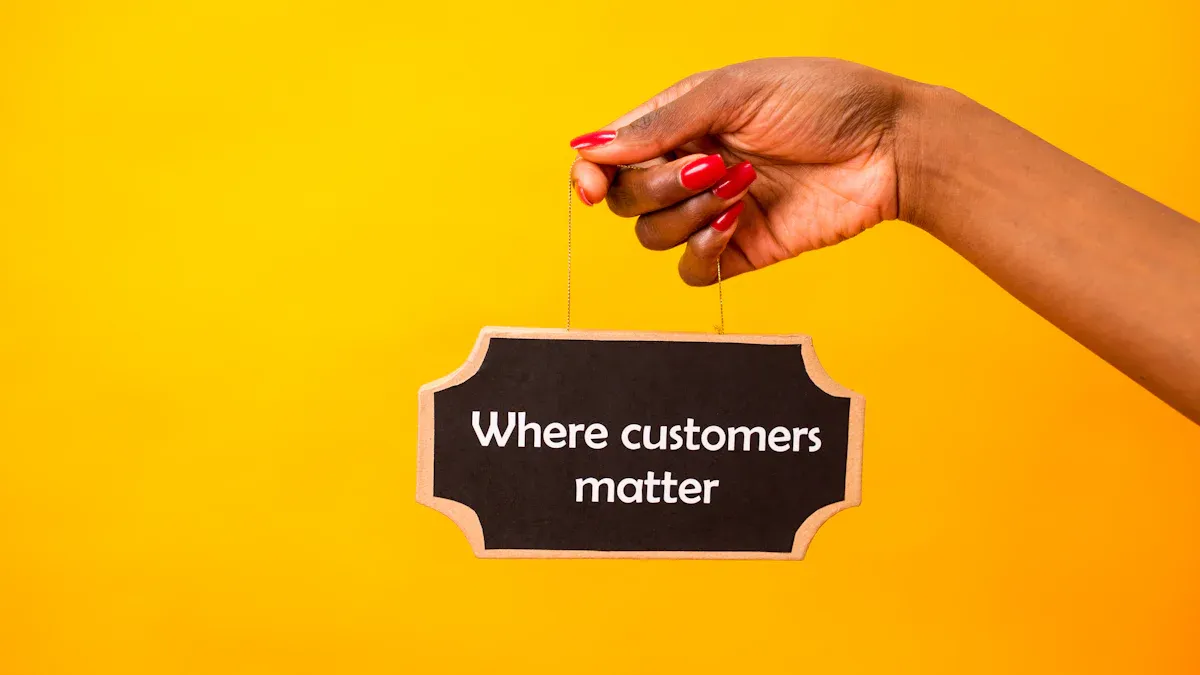
Turning Negative Experiences into Positive Outcomes
Negative experiences can feel like a setback, but they also present an opportunity to build a stronger relationship with your customers. A well-crafted apology email to a customer can turn dissatisfaction into loyalty by addressing their concerns with empathy and action. Research highlights several strategies for achieving this:
- Always apologize, even if the issue seems minor. Acknowledging the problem shows customers that their feedback matters.
- Personalize your response to address the specific issue. Customers feel valued when you tailor your communication to their experience.
- Invite customers to discuss their concerns privately. This approach avoids public confrontations and fosters a better resolution.
- View negative feedback as a chance to improve. By addressing complaints effectively, you can enhance your reputation and service quality.
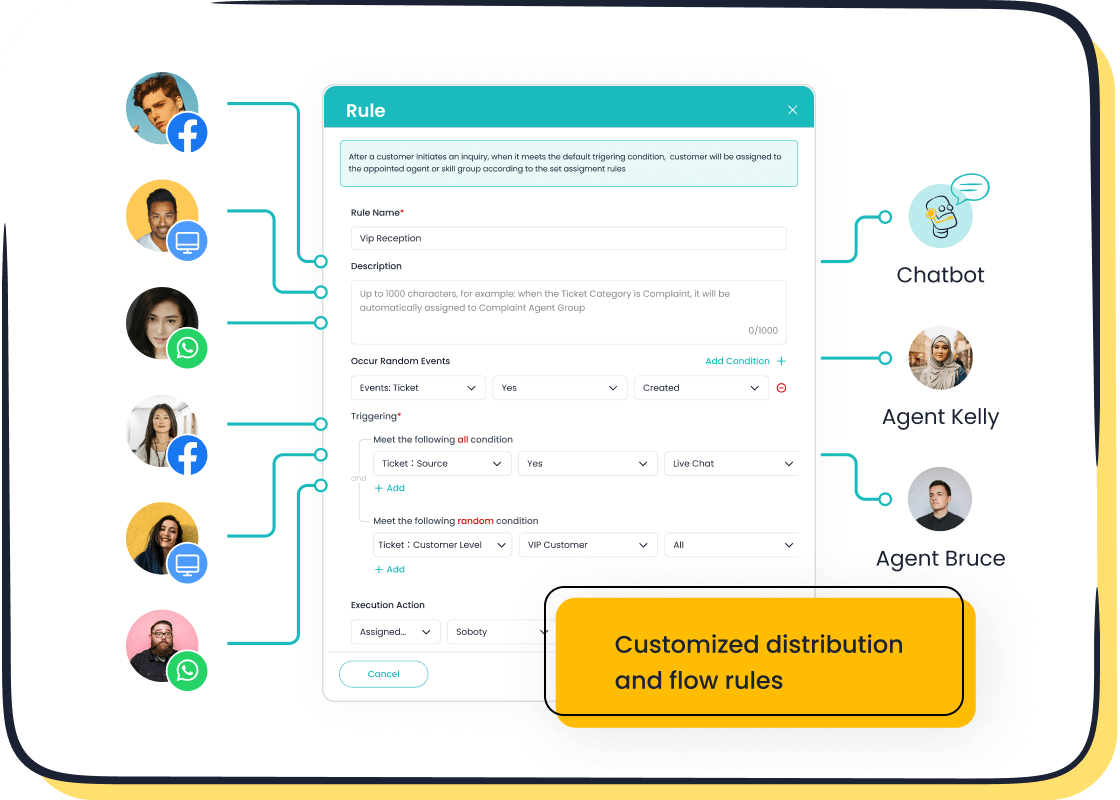
Sobot’s Live Chat solution simplifies this process by consolidating customer interactions into a unified workspace. This allows your team to respond quickly and personally, ensuring that every apology email feels genuine and impactful.
Building Long-Term Customer Loyalty
Apology emails do more than resolve immediate issues—they cultivate a better relationship with your customers over time. When you take responsibility and offer meaningful solutions, you demonstrate your commitment to their satisfaction. This transparency builds trust, which is essential for long-term loyalty.
- Sending an apology email after a shipping delay, paired with a discount or refund, can mitigate negative feelings and encourage repeat business.
- Sincere apologies help regain trust from dissatisfied customers, transforming them into loyal advocates.
- Email marketing, when combined with personalized apologies, strengthens customer retention strategies.
Sobot’s omnichannel solution enhances this process by ensuring consistent communication across platforms. Whether through email, live chat, or social media, you can maintain a unified tone that reinforces your dedication to customer care.
Real-Life Examples of Successful Apology Emails
Successful apology emails often include three key elements: acknowledgment of the issue, an offer of restitution, and a gesture of goodwill. For example:
- A retailer apologizes for a delayed shipment by offering a refund and a $10 store credit. This not only resolves the issue but also encourages future purchases.
- A financial service provider addresses a technical glitch by explaining the cause, outlining steps to prevent recurrence, and offering a complimentary service upgrade.
Opay, a financial platform, used Sobot’s omnichannel solution to manage customer concerns effectively. By addressing issues promptly and offering tailored solutions, Opay increased customer satisfaction from 60% to 90%. This demonstrates how a structured approach to apology emails can transform customer relationships.
How Sobot Live Chat Enhances Apology Email Effectiveness
Crafting effective apology emails requires precision, empathy, and timely communication. Sobot Live Chat simplifies this process by equipping you with tools that enhance the quality and impact of your customer interactions. Its features ensure your apology emails resonate with sincerity and professionalism, turning negative experiences into opportunities for growth.
1. Personalized Responses with Unified Customer Data
Sobot Live Chat consolidates customer information into a unified workspace. This allows you to access detailed profiles, including past interactions and preferences, ensuring your apology emails feel personal and relevant. For example, if a customer experienced a delayed delivery, you can reference their specific order and offer tailored solutions. Personalization increases customer satisfaction by 38%, according to industry studies.
2. Timely Communication Across Channels
Speed matters when addressing customer concerns. Sobot Live Chat supports omnichannel communication, enabling you to respond promptly via email, social media, or live chat. Customers appreciate quick resolutions, and timely apology emails can prevent churn. A study by HubSpot found that 90% of customers expect immediate responses when issues arise. Sobot ensures you meet these expectations.
3. AI-Powered Insights for Better Apologies
Sobot Live Chat uses AI tools to analyze customer sentiment and suggest empathetic language for your apology emails. These insights help you craft messages that address emotional pain points effectively. For instance, AI can identify frustration in a customer’s tone and recommend phrases that convey genuine regret. This approach builds trust and loyalty.
4. Built-In Analytics for Continuous Improvement
Sobot Live Chat evaluates over 150 indicators to optimize your communication strategies. Its analytics feature helps you track the effectiveness of your apology emails, identifying areas for improvement. By analyzing customer feedback, you can refine your approach and ensure future emails align with customer expectations.
Tip: Use Sobot Live Chat’s satisfaction surveys to gather insights after sending apology emails. This feedback helps you measure the impact of your efforts and make data-driven decisions.
Sobot Live Chat transforms the way you handle customer concerns. Its advanced features empower you to craft apology emails that not only resolve issues but also strengthen customer loyalty. Explore more about Sobot Live Chat here.
Practical Tips for Writing Effective Apology Emails
Personalizing the Message
Personalization is the cornerstone of an effective apology email to a customer. A generic message can feel insincere, but tailoring your communication to the recipient’s specific experience demonstrates genuine care. Start by addressing the customer by name and referencing the issue directly. For example, instead of saying, "We apologize for the inconvenience," write, "Dear [Name], we deeply regret the delay in delivering your order on [date]."
Personalized messages resonate more with customers. Studies show that American adults rate apologies higher when they include acknowledgment of responsibility and an offer of repair. Similarly, Dutch and Turkish college students are more forgiving when offenders express remorse and admit blame. By incorporating these elements, you can create a message that feels authentic and impactful.
Sobot’s Live Chat platform simplifies personalization by consolidating customer data into a unified workspace. This allows you to craft messages that address individual concerns with precision, ensuring your customers feel valued and understood.
Keeping the Tone Empathetic and Professional
An empathetic and professional tone is essential when writing apology emails. Empathy shows customers that you understand their frustration, while professionalism reinforces your credibility. Avoid overly casual language or excessive formality. Instead, strike a balance that conveys care and competence.
For example, instead of saying, "Sorry for the inconvenience," write, "We deeply regret the frustration this situation has caused. Your experience matters to us, and we are committed to making things right." Research highlights the importance of empathy in apologies, especially when addressing sensitive topics. It helps express understanding and care, making customers feel supported.
Sobot’s omnichannel solution ensures consistent tone across platforms, whether you’re communicating via email, live chat, or social media. Its AI-powered tools analyze customer sentiment, helping you craft messages that align with their emotional needs. This approach builds trust and strengthens your relationship with customers.
Following Up to Ensure Customer Satisfaction
Following up after sending an apology email is crucial for maintaining customer satisfaction. A follow-up demonstrates your commitment to resolving the issue and ensures the customer feels heard. Use this opportunity to confirm that the problem has been addressed and invite further feedback.
The impact of follow-ups is significant:
| Evidence Type | Description |
|---|---|
| Profitability Increase | Companies that engage customers consistently see a 5-20% increase in profitability. |
| Customer Retention | 86% of customers are likely to stay loyal to a business that delivers regular and personalized communication. |
| Risk Reduction | 32% of customers will leave a brand after just one bad experience, which effective follow-ups can mitigate. |
Sobot’s satisfaction survey feature makes follow-ups seamless. By collecting customer feedback, you can identify areas for improvement and ensure sustained satisfaction. For example, Opay used Sobot’s tools to follow up with customers after resolving issues, increasing satisfaction rates from 60% to 90%. This proactive approach not only retains customers but also turns them into advocates for your brand.
Leveraging Sobot’s Omnichannel Solution for Seamless Communication
Effective communication is the backbone of exceptional customer service. Sobot’s omnichannel solution empowers your business to deliver seamless and consistent interactions across multiple platforms. By unifying communication channels such as email, social media, live chat, and voice calls into a single workspace, you can ensure that no customer inquiry goes unanswered.
1. Unified Customer Interactions
Sobot’s omnichannel solution consolidates all customer interactions into one platform. This eliminates the need to switch between tools, saving time and reducing errors. For example, if a customer reaches out via WhatsApp and later follows up through email, your team can access the entire conversation history in one place. This unified approach ensures continuity and enhances customer satisfaction.
| Feature | Benefit |
|---|---|
| Unified Workspace | Access all customer interactions in one place for better efficiency. |
| Multi-Channel Support | Engage customers on their preferred platforms, from social media to email. |
| AI-Driven Insights | Analyze customer sentiment to craft empathetic and effective responses. |
2. Real-Time Responsiveness
Customers expect quick resolutions. Sobot’s omnichannel solution enables your team to respond promptly, regardless of the channel. According to HubSpot, 90% of customers value immediate responses. With Sobot, you can meet these expectations effortlessly, reducing response times and improving customer retention.
3. Data-Driven Improvements
Sobot’s built-in analytics evaluate over 150 indicators, providing actionable insights. These insights help you identify communication bottlenecks and optimize your processes. For instance, Opay used Sobot’s solution to streamline its customer service, achieving a 90% satisfaction rate and a 20% cost reduction.

Tip: Use Sobot’s satisfaction surveys to gather feedback and continuously refine your communication strategies.
By leveraging Sobot’s omnichannel solution, you can transform your customer service into a seamless, efficient, and customer-centric operation. Learn more about Sobot’s omnichannel capabilities here.
Sincere apology emails are a cornerstone of an effective customer communications strategy. They not only address immediate concerns but also foster trust and loyalty. Research underscores their significance: 62% of Americans believe overusing "I’m sorry" undermines sincerity, emphasizing the need for authenticity. Acknowledging mistakes and offering genuine amends enhance customer satisfaction and reduce feelings of inequity. These actions demonstrate your investment in the relationship, transforming service failures into opportunities for growth.
By prioritizing empathy and transparency, you can turn challenges into trust-building moments. Tools like Sobot’s Live Chat and omnichannel solutions streamline this process, enabling timely, personalized responses that resonate with customers. When you approach apologies with sincerity and a commitment to improvement, you not only resolve issues but also strengthen long-term loyalty.
FAQ
What makes an apology email to a customer effective?
An effective apology email includes acknowledgment of the issue, genuine regret, and a clear resolution. Personalization and empathy are key. For example, using Sobot’s Live Chat, you can access customer data to craft tailored responses, ensuring your message resonates and strengthens customer loyalty.
How quickly should you send an apology email?
You should send an apology email as soon as you identify the issue. Timely communication shows you value the customer’s time. Sobot’s omnichannel solution enables real-time responses across platforms, ensuring you address concerns promptly and prevent customer churn.
Can apology emails improve customer loyalty?
Yes, well-crafted apology emails can turn negative experiences into loyalty-building opportunities. Research shows 70% of customers return if their complaints are resolved effectively. Using Sobot’s tools, like satisfaction surveys, you can measure the impact of your apologies and refine your approach.
Should you offer compensation in an apology email?
Offering compensation depends on the situation. A small gesture, like a discount or refund, can rebuild trust. For instance, Sobot’s Live Chat helps agents quickly identify appropriate compensations, ensuring customers feel valued and satisfied with the resolution.
How does Sobot enhance the effectiveness of apology emails?
Sobot’s Live Chat and omnichannel solutions streamline communication, enabling personalized and timely responses. Features like AI-powered insights and unified customer data help you craft empathetic, impactful apology emails. Learn more about Sobot’s tools here.
See Also
10 Strategies To Enhance Live Chat Customer Experience
AI-Powered Customer Service Agents Transform Assistance
Best Customer Feedback Tools Analyzed And Compared
